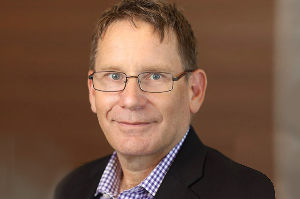
It only has an advantage in the four- and five-year fixed rates.
The bank has trimmed its rates by 10 and 15 basis points, reducing the one year rate to 6.64% (down 0.2%), the 18-month rate to 6.64% (down 0.15%), and the two-year term at 6.69% (down 0.2%) - all higher than its main rivals.
The move probably makes little difference with the mortgage market in the doldrums and January house sales at their lowest for 40 years. It was not much different last month.
CoreLogic expects Interest rates to increase slightly this year, although research head Nick Goodall says they are closer to the peak than the trough.
Speaking at the TMM Better Business Conference recently, Goodall and economist Tony Alexander were mostly in tune on the direction of interest rates, although both pointed out that they had not collaborated.
Alexander says fixed rates have peaked, but it will not be a rapid descent. “I think the fall will be quite a gradual one – completely different to previous periods.”
He says interest rates aren’t going to fall by 2% over the next 12 months, despite some heated speculation they might.
Looking at previous periods of monetary policy tightening in New Zealand, there have been periods of spectacular growth and decline. Interest rates went up and up and then plummeted by about 5% in as little as six months during the 1997/98 Asian financial crisis and then the same thing happened over about 13 months during the 2008/2009 global financial crisis (GFC).
There will be nothing remotely like that this time around, says Alexander. He says the key thing is people are pulling away from believing the worst case scenario of 8% interest rates.
“It is going to take a while to feed through to people’s psyches because the focus will be on those rolling off an average 3.5% to a 6.5% fixed interest rate on their mortgages. So that is going to be the dominant feature.”
Over the hump
Goodall says the industry is probably through the largest hump of people having to take the biggest leap upwards in their mortgage payments. “There is more to come but not as much as there has been already.”
This is because about 50% of mortgage borrowers have consistently chosen a one year fixed rate. There was a massive lift in borrowers choosing that rate because it fell to under 3% after the pandemic.
When many borrowers rolled off a middle 2% to a middle 6% rate from mid last year, there were fears they could struggle to make their mortgage payments.
They adjusted their spending and are again favouring the one-year rate, and when they roll off that next year the jump in interest payments won’t be so great, says Goodall.
“There is no doubt that there are people who still have to move from 3.4% to 6.5% but it is not the majority of borrowers so that pain should be reduced.”
He says there hasn’t been a lift in banks' non-performing loans, nor a rise in people moving on to interest-only payments because they can’t meet their mortgage interest and principal payments.
“Yes, there has been a little bit of a lift in the amount banks are putting aside for bad provisions, but it is not out of the realms of normality.”
Goodall says the industry is generally well placed for a continued rise in interest rates in the short term because borrowers will get through by adjusting their behaviour and spending habits to continue paying their mortgages and there won’t be a massive increase in mortgagee sales.




Comments
No comments yet.
Sign In to add your comment